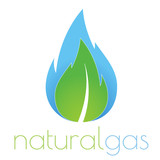
Alex Mills
By Alex Mills
The future of the natural gas industry looks bright as supply and demand are expected to increase, and prices are predicted to be stable.
Demand increases will come from the electric power sector and exports, according to the Energy Information Administration at the Department of Energy.
EIA forecasts natural gas consumption by the electric power sector to increase by 1.1 billion cubic feet per day (Bcf/d), or 3.8 percent, from 2018 “as a result of favorable natural gas prices and coal-to-gas swithching.”
Even though the electric power sector is the largest consumer of natural gas, residential and commercial uses are important parts of the total consumption picture. Residential use is forecast to be flat for the remainder of the year, but use by the industrial sector will grow 2.5 percent in 2019, EIA predicts. “Low natural gas prices in recent years have made it economical to use natural gas as feedstock in fertilizer, methanol, ethylene, propylene, and polyethylene facilities,” EIA notes.
 EIA estimates that total U.S. natural gas consumption averaged 82.1 Bcf/d in 2018, and EIA expects it to increase by 2.5 Bcf/d (3.1%) in 2019 and then remain almost flat in 2020.
EIA estimates that total U.S. natural gas consumption averaged 82.1 Bcf/d in 2018, and EIA expects it to increase by 2.5 Bcf/d (3.1%) in 2019 and then remain almost flat in 2020.
EIA expects large production gains experienced recently to slow somewhat. During the first half of 2019, EIA estimates that dry natural gas production averaged 89.9 Bcf/d, a 12.2% increase from levels in the first half of 2018. In the second half of 2019, EIA expects dry natural gas production to average 92.7 Bcf/d, a 7.1% increase from the second half of 2018.
“Anticipated natural gas production growth is supported by planned expansions in liquefied natural gas (LNG) capacity and increased pipeline exports to Mexico,” EIA stated.
The United States exported more natural gas than it imported in 2018 and the first half of 2019, with net exports during those periods averaging 2.0 Bcf/d and an estimated 3.9 Bcf/d, respectively. Rising LNG exports and pipeline exports have contributed to a shift in the United States’ status from a net importer to a net exporter of natural gas on an annual basis since 2017. Total U.S. gross exports of natural gas averaged 9.9 Bcf/d in 2018. EIA forecasts that these volumes will rise by 28% to 12.6 Bcf/d in 2019, then further by 23% to 15.6 Bcf/d in 2020.
EIA expects U.S. LNG exports to increase by 63% to 4.8 Bcf/d in 2019 and by 42% to 6.9 Bcf/d in 2020, as three new liquefaction projects come online. EIA forecasts that U.S. LNG export capacity will increase by almost 50% by the end of 2019 to 6.3 Bcf/d baseload capacity as new trains at Corpus Christi, Cameron, Freeport, and Elba Island LNG are commissioned, making U.S. LNG export capacity the third-largest in the world behind Australia and Qatar.
EIA forecasts the spot price for natural gas at Henry Hub, the trading location of gas traded on the NYMEX futures market, will average $2.50 per million British thermal units (MMBtu) in the second half of 2019 ($2.62/MMBtu for all of 2019) and $2.77/MMBtu in 2020. Henry Hub spot prices dropped from an average of $2.64/MMBtu in May to an average of $2.40/MMBtu in June, with some daily prices in June falling below $2.30/MMBtu.
Natural gas closed at $2.32 on Wednesday.
EIA projects natural gas will average $2.37 during the remainder of the summer, which is 55 cents lower than last year and the lowest price since 1998.
Some areas, including the Panhandle and Permian Basin in Texas, experience even lower prices because of an oversupply.
Alex Mills is the former President of the Texas Alliance of Energy Producers.
Pratt note: Berkeley libs will not be happy: Berkeley bans natural gas in new buildings





















Speak Your Mind